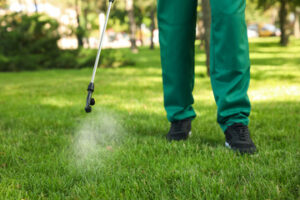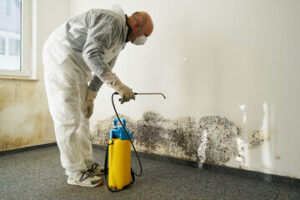Rodents cause significant damage to property, carrying diseases and contaminating food. They chew on drywall, wires and insulation causing fire hazards and structural damage.

Good housekeeping can reduce rodent infestations. That means sweeping, keeping food in tightly sealed containers and preventing access to smelly garbage. Blocking entry points is also important. Keep reading the article below to learn more about Rodent Retreat.
Rodents can cause significant damage to a home or business, leaving droppings and chewing on wires. They are also carriers of disease and a threat to human health. Rodents can chew through the insulation of electrical wires, creating a fire hazard. They also leave behind a distinctive odor due to urine and feces accumulation. In addition, gnaw marks may appear on furniture and walls. Fresh gnaw marks are light in color, but become darker as they age.
Rodents are opportunistic, and will use a variety of materials to build nests for breeding and raising offspring. These nests often contain shredded paper, fabric, and insulation. If you find a nest in your attic, garage, or other storage area, this is a sign of an infestation. Also, keep an eye out for rodents chewing through food packages in your pantry or cupboards.
Listen for scratching or scurrying sounds in walls or ceilings, especially at night. These sounds are usually the result of rodents moving around in a dark, secluded area.
Tracks and runways are another common indicator of a rodent problem. These tracks are typically greasy smudges that can be seen with a flashlight or blacklight held over the suspect area. They are particularly visible in dusty or less-frequently used areas. A mouse’s tracks will look smaller and have four toes on each foot, whereas rats’ prints are larger and show five toes.
Rodents can be incredibly agile, and will create tunnels to travel throughout your home or office. These tunnels will be marked by gnaw marks, which are caused by their constant need to gnaw in order to keep their incisor teeth from growing too long. These marks can be on furniture, walls, and even electrical wires.
You may also notice signs of rodent activity outside your home or business, such as gnawed tree branches, chewed plants, or a scurrying sound in the attic. Keep in mind, however, that rodents are very good at hiding and can be difficult to spot. A professional exterminator can help you identify and eradicate a rodent infestation.
Exclusion
Rodents can do a lot of damage to your home and property. They have the potential to chew through wires, insulation and framing, which can cause fires and electrical problems. Rodents also contaminate food sources and surfaces with their droppings, urine and saliva. In addition, they carry fleas that can spread diseases like salmonella, typhus and the bubonic plague.
A few rodents can quickly become an infestation due to their rapid breeding, so preventing them from entering your property is key. Rodent exclusion is one of the most effective and non-toxic ways to do this. A trained professional will examine your property to identify entry points and seal them using durable materials that resist gnawing. These may include steel wool, concrete patch and chew-resistant caulking. They will inspect roofs, soffits and vents to make sure they are adequately protected as well. They will also check wood piles and overgrown weeds for signs of mice or rat burrows.
Mice can squeeze through gaps as small as a quarter and rats through even smaller openings, so it is important to regularly inspect and protect your home. Some of the most common entrance points are gaps around windows and doors, cracks in the foundation, vents, chimney stacks and utility entry points. Some of these can be easily sealed with DIY products, but it is important that they are done correctly to prevent rodents from entering. A trained pest control expert can spot the tiny gaps and vulnerabilities — like those in crawlspace walls and under sinks — that DIY solutions often miss. They can also use commercial-grade exclusion materials that outperform anything available at a home improvement store.
To help prevent rodents from invading your home, properly store food and limit clutter. Keep trash in tightly sealed containers and clean up crumbs from counters and tables. Avoid placing pet food, bird seed or vegetable scraps in open bins and be sure to close them when not in use. Finally, trim any trees and shrubs that could serve as a climbing ladder up to your roof or near the house and keep them clear of debris. These simple preventive steps can significantly reduce your risk of a rodent infestation.
Bait Traps
Rodents are unwelcome guests in any home, and they can cause serious damage to buildings and crops. They also carry and spread serious diseases, which makes it essential to take control of them as soon as they appear.
Depending on the severity of your rodent problem, you may need to employ a combination of bait traps and other pest control techniques. We’ll look at the pros and cons of each to help you decide what’s best for your property.
Snap traps are the classic mouse trap you’ve probably seen in a movie or cartoon, and they’re still an effective solution for many situations. They’re simple and inexpensive, with a pressure-sensitive plate that activates when a rodent triggers it in an attempt to access the bait. The mechanism then rapidly releases a bar that delivers a fatal blow to the neck or back of the trapped animal.
Glue traps offer another humane option, with bait sitting on top of an extremely sticky adhesive material. When a rodent steps on the bait to reach it, they become stuck and can’t escape. The disadvantage of these traps is that it can take hours or even days for the adhesive to take effect, during which time the rodent will continue to suffer and die.
Electric rat traps are more modern options that lure in mice or rats using bait and exterminate them with a high-voltage electric shock. They’re reusable, but they do need regular cleaning, clearing and resetting to function effectively. From an ethical standpoint, they’re a more difficult choice than other methods that kill instantly, but they can be a less hazardous alternative to poison alternatives when used correctly.
For the environmentally conscious, there are also live release traps available. These allow you to catch rodents and release them back into the wild when they’re no longer a threat to your environment, but this can be a risky and inhumane process if not done correctly. Goodnature traps, for example, are among the most efficient of these options as they have been independently tested and approved by the National Animal Welfare Advisory Council (NAWAC). They also use an ALP system that uses a CO2 canister to instantly kill animals when triggered, making them more ethical than other live-release traps.
Pest Control
Rodents can squeeze through incredibly small gaps, making it easy for them to enter your home. Regularly inspecting and sealing these entry points is essential to rodent control.
Rats and mice can chew through wires, damage wood, and cause a host of other problems when they get inside your home. They are also carriers of deadly diseases that can be spread through their droppings, urine, or bites.
When you notice signs of a rodent infestation, it’s important to act quickly. These pests breed quickly and can cause serious damage to your property if left uncontrolled.
An experienced rodent control professional can help you to identify the signs of a rodent infestation and develop an effective treatment plan. Using traps, bait stations, habitat modification, and exclusion tactics, your expert will be able to keep rodents away for good.
Once the problem has been controlled, your technician will provide preventative maintenance to make sure the rodents don’t come back. This can include regularly inspecting your home’s exterior for cracks, gaps, and entry points and caulking as needed. It can also include keeping garbage, compost, and wood piles sealed and out of reach from rodents, storing dry foods in tightly-closed containers, washing dishes promptly after eating or leaving them off the sink counter, and clearing brush and debris away from your home.
It is possible to reduce the likelihood of a rodent infestation by taking preventative measures on your own, such as cleaning up crumbs and spills, storing pet food in closed containers, and closing garage doors at night. You can also help to make your home less hospitable to rodents by checking your yard and landscaping for areas where they could be nesting or hiding and repairing them as needed. Finally, you can encourage natural predators of rodents, such as owls, by building habitats on your property.
No matter what steps you take to discourage a rodent invasion, it’s important to contact your Arrow professional at the first sign of trouble. Whether you’re dealing with one or two mice or a horde of rats, a delay in action can lead to more and more costly repairs and even structural damage to your home.




